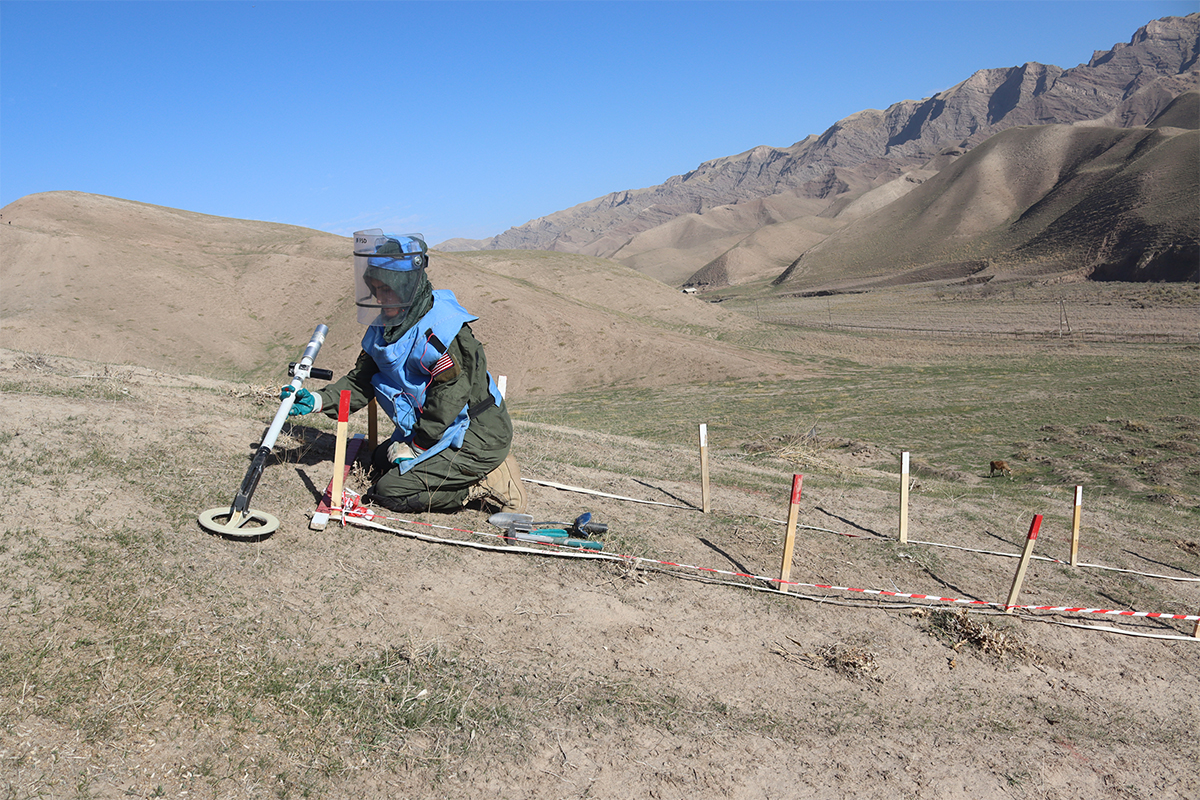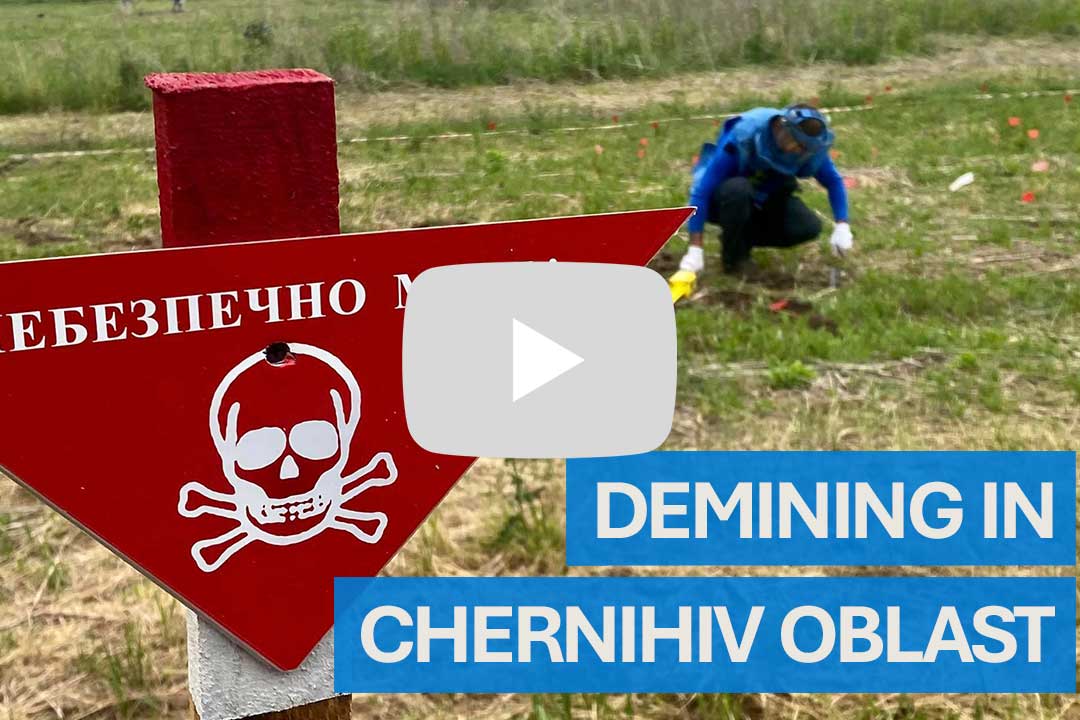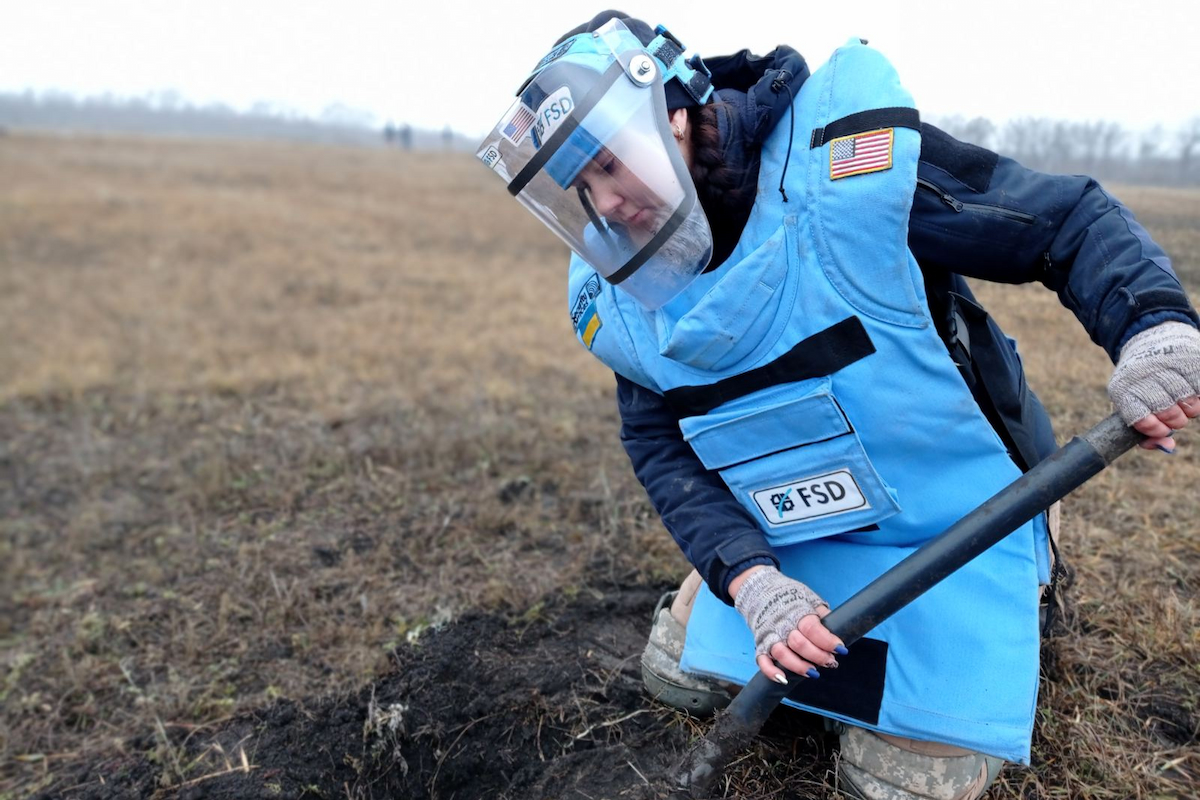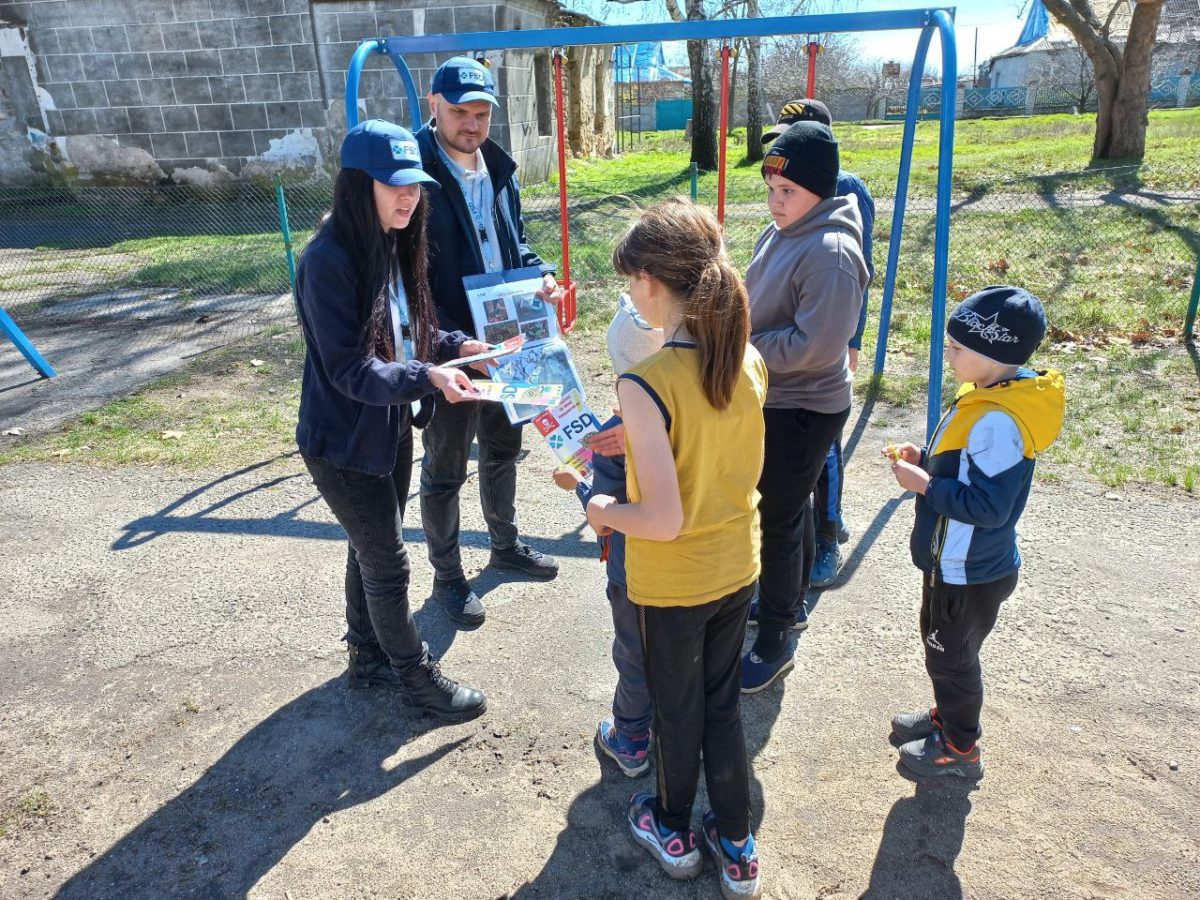Ukraine
Initially active in the Donbas, FSD is now working in the provinces of Chernihiv and Kharkiv. Our workforce has expanded considerably to speed up demining operations in the country and meet the needs of civilians affected by the ongoing conflict. In parallel, large-scale risk education campaigns are delivered among the affected populations to prevent accidents.

New FSD recruits undergo practical demining evaluation before being deployed in the field (Ukraine, 2023)
News
400 FSD staff are active to clear the land from mines and unexploded ordnance in Ukraine
April 2024 / The fighting in Ukraine has left behind hundreds of thousands of anti-personnel mines, anti-vehicle mines and unexploded or abandoned ordnance which did not explode on impact. According to the Ukrainian authorities, a third of the country is contaminated. These dangerous remnants of war not only threaten the lives of civilians, but also obstruct humanitarian efforts, hamper reconstruction and prevent farmers from accessing their fields.
In total, nearly 400 FSD staff are active in the provinces of Chernihiv and Kharkiv. Operations are also being carried out on an ad hoc basis in the provinces of Mykolaïv and Odessa. Before the end of June 2024, FSD will be operational full-time in the provinces of Donetsk and Kherson.
To date, FSD has eighteen clearance teams, twelve non-technical survey teams and nine explosive ordnance risk education teams. Specialized machines are used to prepare the ground for clearance in rural areas, while armoured construction machines help with the clearance of collapsed buildings.
In addition to the partnership with the World Food Programme and the Food and Agriculture Organisation of the United Nations, Switzerland is funding a large-scale project in the province of Kharkiv and the opening of a new operational base in the province of Kherson. FSD is also focusing on harnessing new technologies and constantly improving its geographic information systems. This refines the skills of our teams and strengthens our ability to intervene rapidly in other critical zones.
In 2023, FSD’s demining teams have secured more than 320,000 square metres of land, including farmland, village areas, towns and vital infrastructure. During the same period, more than 140,000 women, men and children took part in FSD risk education sessions, learning how to identify explosive devices and how to adopt the right behaviour to stay safe in the face of this threat.
Since March 2023, FSD has been providing technical assistance to the Ukrainian State Emergency Service (SESU) in the deployment and use of eight demining machines recently received by Ukraine.
I found a big pile of explosives near a village. I’m happy FSD found them and not the local children because, at first glance, it doesn’t look dangerous at all.
Nadiya Kudriavtseva
Ukrainian FSD deminer

Stories
News from Ukraine
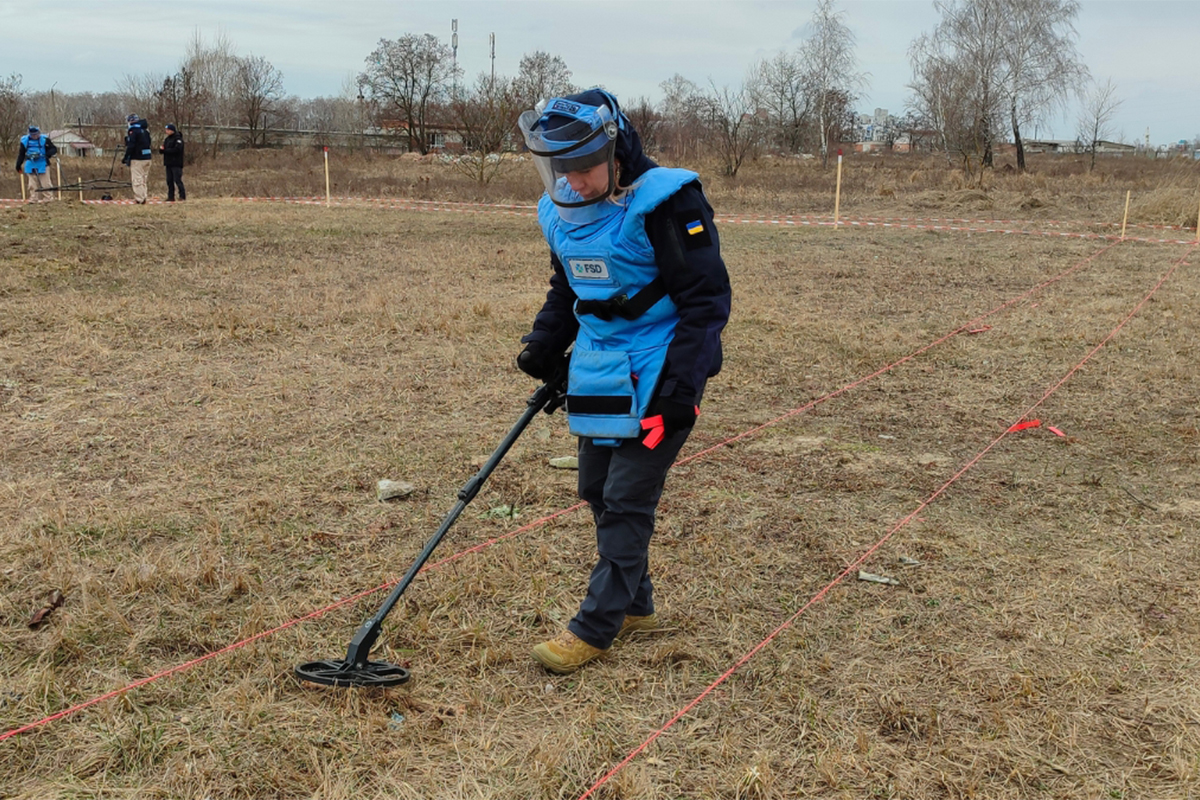
Our operations in Ukraine – April 2024
As of 1st April 2024, nearly 400 FSD employees work to locate and neutralise explosive devices in the country so that women, men and children can resume their daily activities in complete safety.
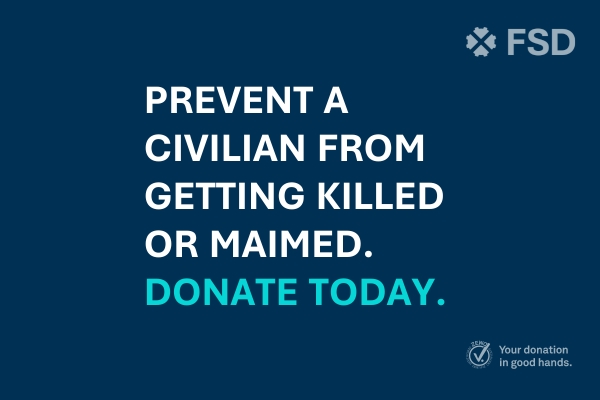
Help us prevent mine accidents
The ongoing conflict in Ukraine is littering cities and farmland with massive amounts of unexploded ordnance. Every contribution, regardless of the amount, helps us rid the country of these lethal remnants of war.
Timeline
FSD in Ukraine
FSD’s involvement in Ukraine dates back to the beginning of 2015, in the Donbas region. The aim was to minimise civilian casualties by teaching people to “live with” mines and unexploded ordnance in relative safety until all contaminated areas are cleared.
In 2017, FSD began a demining programme to locate and destroy explosive devices in the same region.
In late 2019, a project was launched to increase access to education in conflict areas. When FSD staff visited schools and kindergartens for their mine risk education missions, they saw the extent of destruction of schools and the devastating impact of the conflict on the daily lives of children.
In 2022, as the fighting intensified and spread throughout the country, FSD’s activities were reoriented to provide emergency humanitarian aid (food, shelter, medicines, fuel, etc.).
As soon as the security situation allowed, demining and risk education were resumed.
To date, FSD is mainly active in the provinces of Chernihiv and Kharkiv.
Furthermore, a major partnership with the United Nations (WFP/FAO) has been established to clear small-scale farms of mines.
FSD’s Ukraine programme is funded by the U.S. Department of State, the Ukraine Humanitarian Fund, Swiss Solidarity, the Swiss Federal Department of Foreign Affairs and several private foundations, Swiss cantons and municipalities.
Centimetres after centimetres
In 2022, more than 1 000 risk education sessions were delivered in affected communities. This is despite the sometimes extreme working conditions.
newsletter
Where is FSD currently working in Ukraine? What does a landmine look like? Answers to your questions, once a month.
- News from the field
- Demining videos
- Interviews with experts
- Events
- Job offers
